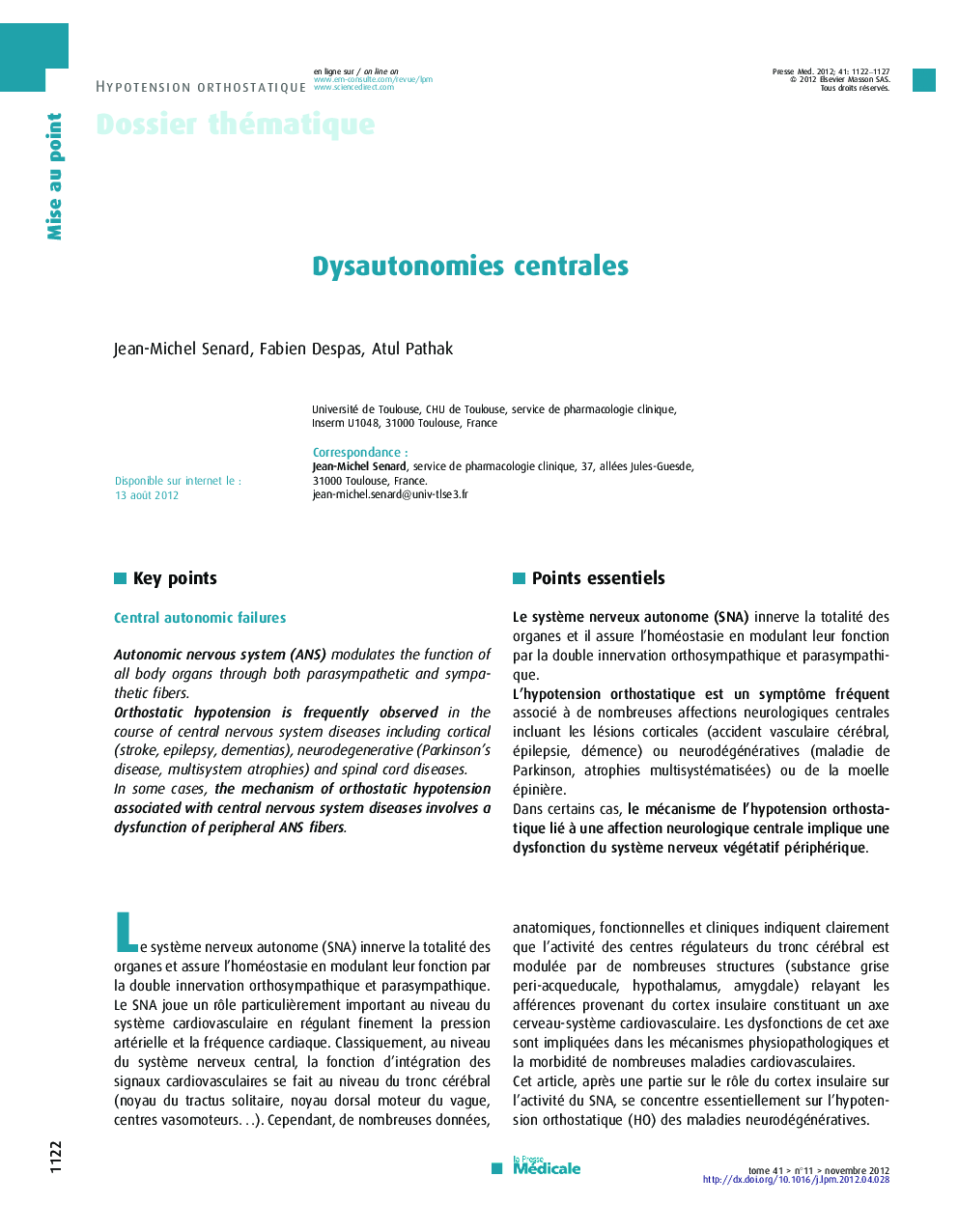| Article ID | Journal | Published Year | Pages | File Type |
|---|---|---|---|---|
| 3819001 | La Presse Médicale | 2012 | 6 Pages |
Key pointsAutonomic nervous system (ANS) modulates the function of all body organs through both parasympathetic and sympathetic fibers.Orthostatic hypotension is frequently observed in the course of central nervous system diseases including cortical (stroke, epilepsy, dementias), neurodegenerative (Parkinson's disease, multisystem atrophies) and spinal cord diseases.In some cases, the mechanism of orthostatic hypotension associated with central nervous system diseases involves a dysfunction of peripheral ANS fibers.
Points essentielsLe système nerveux autonome (SNA) innerve la totalité des organes et il assure l’homéostasie en modulant leur fonction par la double innervation orthosympathique et parasympathique.L’hypotension orthostatique est un symptôme fréquent associé à de nombreuses affections neurologiques centrales incluant les lésions corticales (accident vasculaire cérébral, épilepsie, démence) ou neurodégénératives (maladie de Parkinson, atrophies multisystématisées) ou de la moelle épinière.Dans certains cas, le mécanisme de l’hypotension orthostatique lié à une affection neurologique centrale implique une dysfonction du système nerveux végétatif périphérique.
